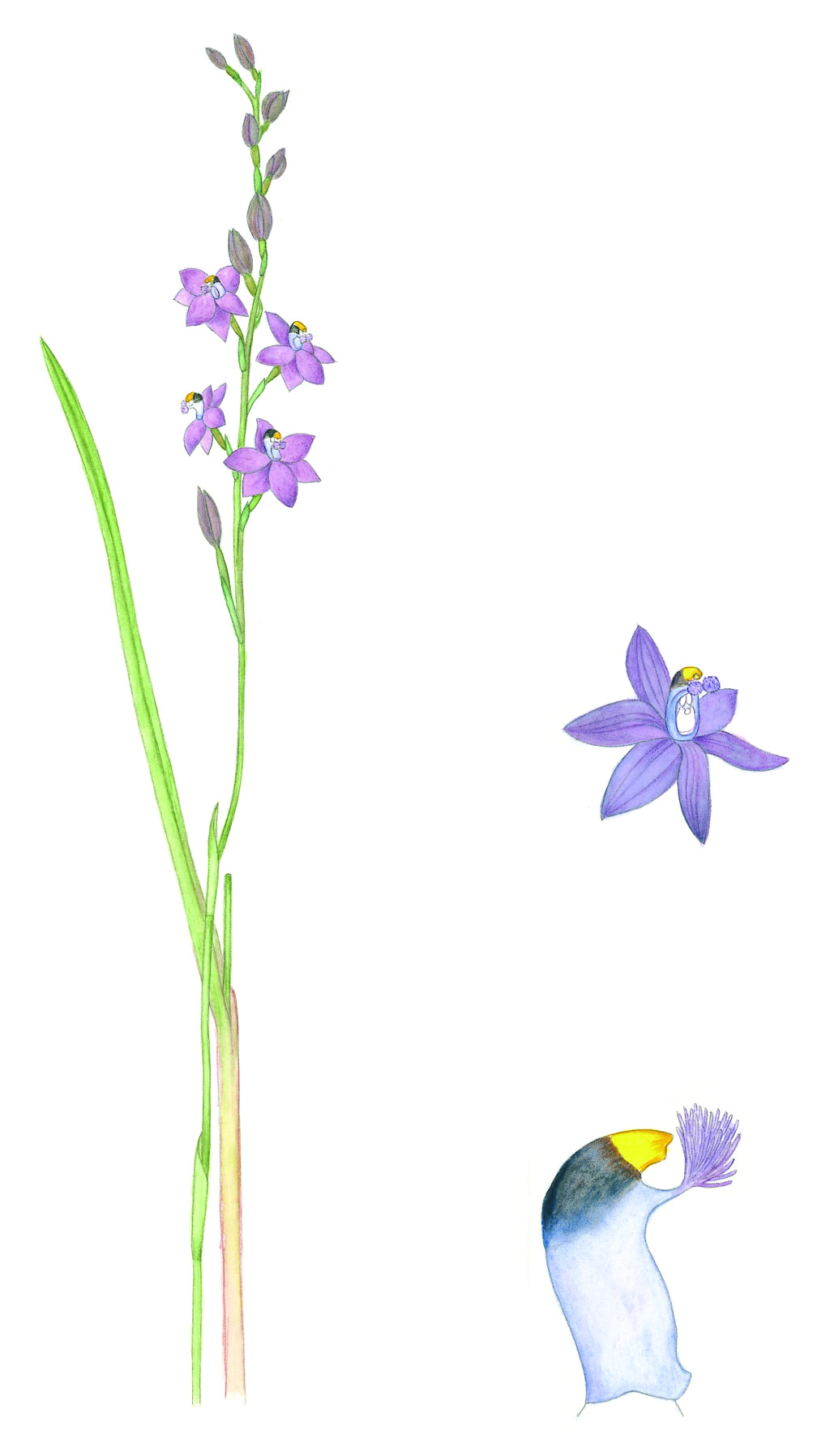Thelymitra malvina
M.A.Clem., D.L.Jones & B.MolloyFlowering stem erect, straight, 25–75 cm tall, 1.5–5 mm diam., green to purplish. Leaf linear to linear-lanceolate, attenuate, 10–35 cm long, 5–20 mm wide, leathery, canaliculate, ribbed abaxially, sheathing at base, dark green with a purplish base. Inflorescence 3–25-flowered, usually loose. Sterile bracts usually 3, rarely 2. Perianth segments lanceolate, elliptic or ovate, 8–16 mm long, slate blue to mauve. Column thick, 6–7.5 mm long, white to blue or mauve; mid-lobe hooding the anther, tubular, inflated, dorsally compressed towards apex, gently curved through 90 deg., mostly dark reddish brown, apex emarginate, yellow, apical orifice small; lateral lobes converging 1–1.5 mm long, digitiform, porrect at base then curved upwards near the middle, each with a sub-terminal mop-like tuft of pink or mauve (rarely white) hairs embracing the mid-lobe. Anther inserted near middle of column, shortly beaked. Flowers Aug.–Nov.
GleP, GipP, CVU, DunT, EGL. Also SA, Qld, NSW, Tas. Found in tall open forest, heathy woodlands and coastal scrublands on well-drained sand or clay loams.
Thelymitra malvina has been confused with T. atronitida, but the latter usually has 2 sterile bracts, slightly smaller flowers, glossy black mid-lobe with a yellow apex and white hair tufts on the lateral lobes of the column.
 Spinning
Spinning



